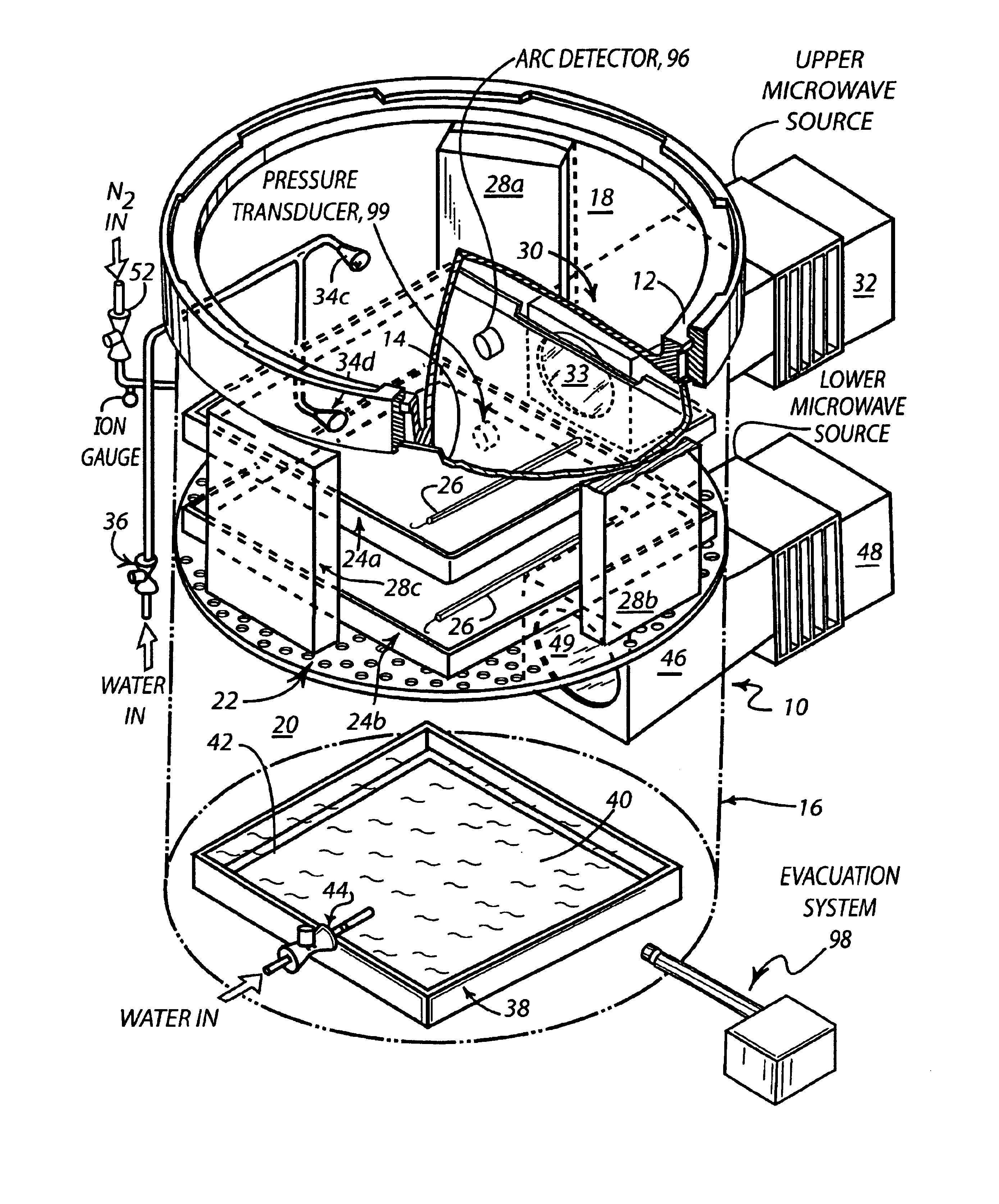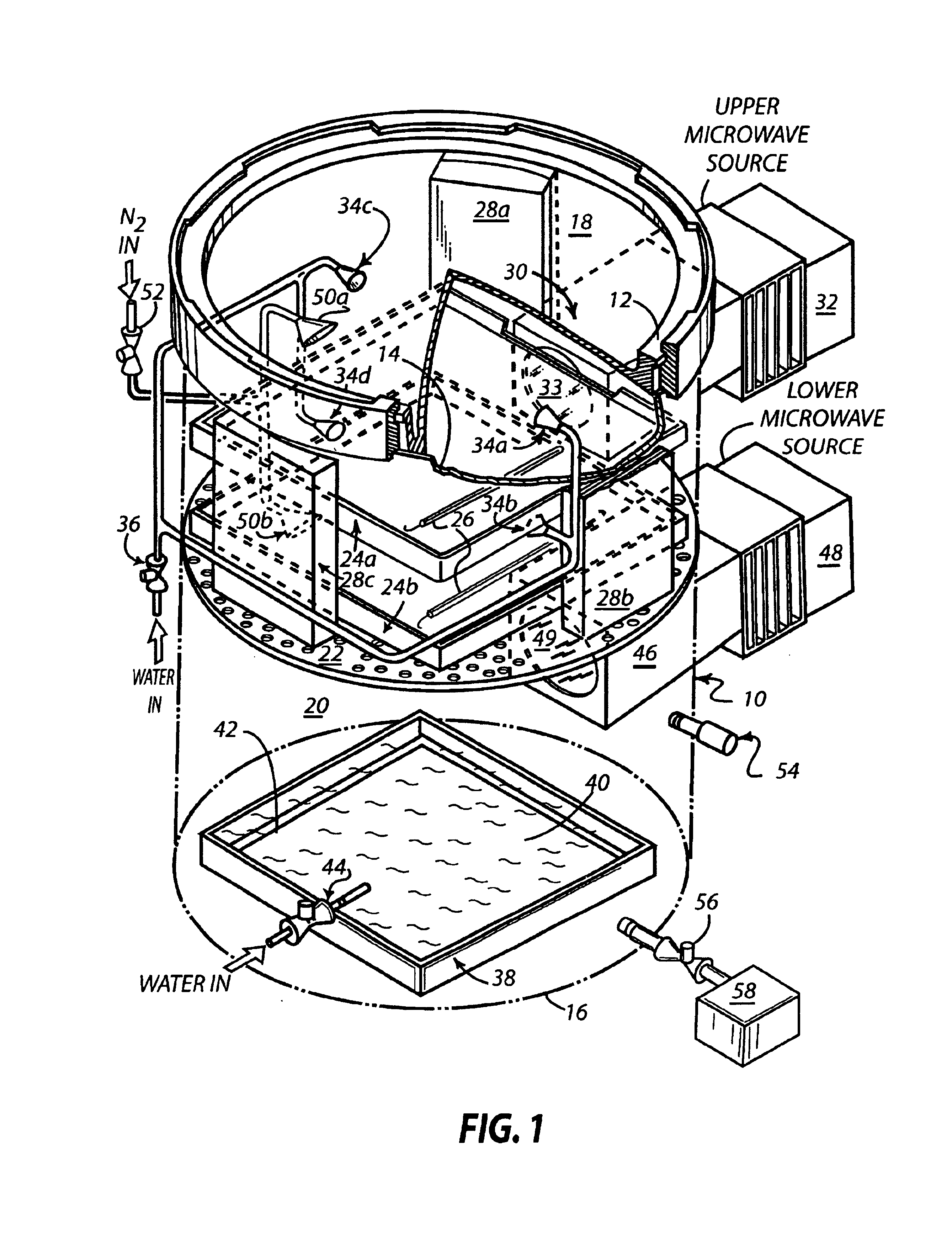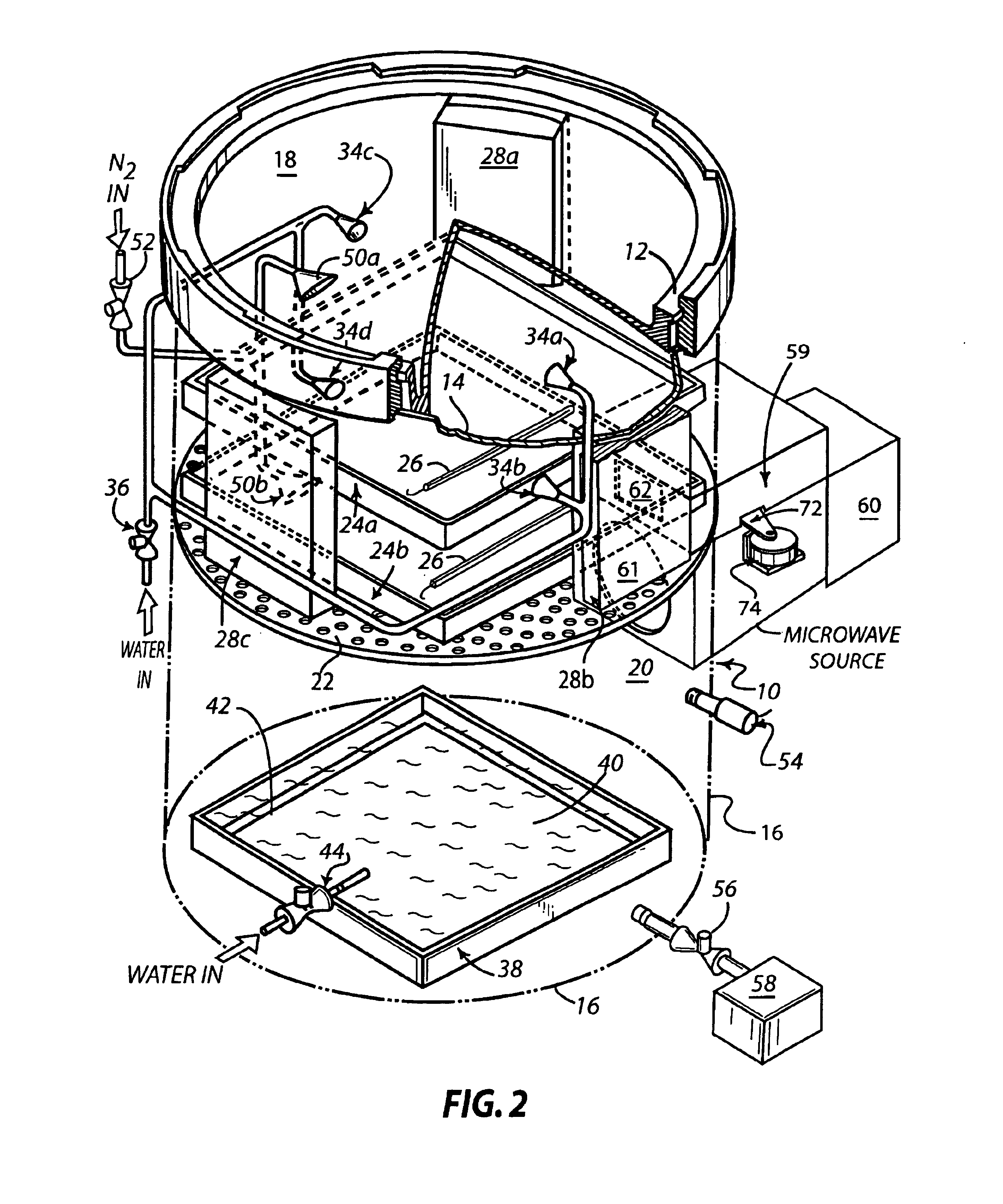Microwave-assisted steam sterilization of dental and surgical instruments
a sterilization and sterilization technology, applied in the field of sterilization of instruments, can solve the problems of ineffective sterilization of surgical instruments, inability to remove all the air, damage to rubber and plastic parts, etc., and achieve the effect of rapid and complete sterilization
- Summary
- Abstract
- Description
- Claims
- Application Information
AI Technical Summary
Benefits of technology
Problems solved by technology
Method used
Image
Examples
Embodiment Construction
[0027]Briefly, the present invention includes a one or two cylindrical chamber surgical and dental instrument sterilizer. After evacuation of the sealed chamber to remove substantially all of the air therein, liquid water is rapidly vaporized by microwave heating with steam being generated at ≧47 psi and a temperature of ≧135° C. in the vicinity of the instruments to be sterilized. Micron-size, water-droplets are intermittently sprayed onto the instruments, which are arranged on a tray, from both the top and from underneath so as to thoroughly wet the instrument surfaces. A 30-90 s duration of droplet spray is followed by pulsed microwave irradiation of the top and underneath surfaces of the instruments for a similar duration, as an example; the sterilization process includes a plurality of such spray / microwave cycles. Sterilizing conditions in the sterilizer are maintained in the presence of the water spray / microwave flashing cycles since introducing small aliquots of water will no...
PUM
| Property | Measurement | Unit |
|---|---|---|
| pressure | aaaaa | aaaaa |
| time | aaaaa | aaaaa |
| temperatures | aaaaa | aaaaa |
Abstract
Description
Claims
Application Information
 Login to View More
Login to View More - R&D
- Intellectual Property
- Life Sciences
- Materials
- Tech Scout
- Unparalleled Data Quality
- Higher Quality Content
- 60% Fewer Hallucinations
Browse by: Latest US Patents, China's latest patents, Technical Efficacy Thesaurus, Application Domain, Technology Topic, Popular Technical Reports.
© 2025 PatSnap. All rights reserved.Legal|Privacy policy|Modern Slavery Act Transparency Statement|Sitemap|About US| Contact US: help@patsnap.com



